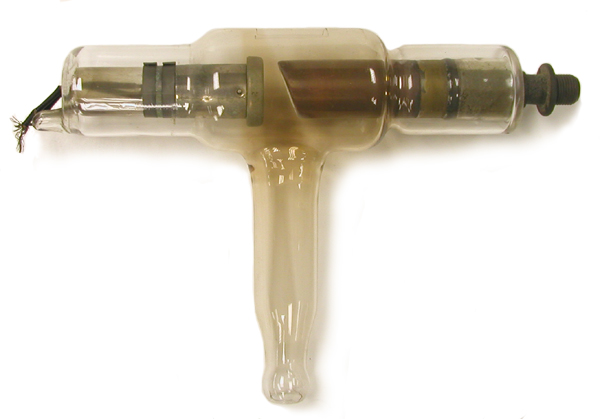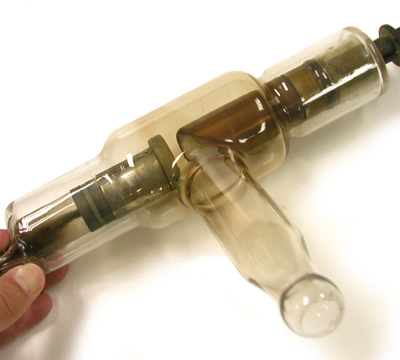Collimated Low Energy Therapy Tube (ca. 1930s)

This is something of a mystery tube since there is nothing on it that would help identify the manufacturer. The original identification might have been on a paper label that has since disappeared. The brown coloration indicates that the tube is made from a "hard" glass. This, and the somewhat primitive look, lead me to guess that the tube dates from the 1930s.

The unique thing about this tube is the fact that an extremely thin window (broken) is located at the end of a 5" extension. I am unsure about the purpose of the glass extension. It might help collimate the beam or it might be intended to establish a desired and reproducible source to skin distance (SSD). Another possibility: it was designed for intracavity work.
The fact that the window is extremely thin indicates that the tube was designed to produce very low energy X-rays. Such low energies would be inappropriate for diagnosis since they would not be sufficiently penetrating to produce an image. Instead, they would be best suited to superficial (e.g., skin) disorders.
This tube once belonged to Carl Braestrup and Richard Mooney at New York’s Francis Delafield Hospital. Whether or not they actually used it is unknown.
Size: 9" long, 2 1/2" in diameter
Donated by Cecilia and Maureen Mooney.
